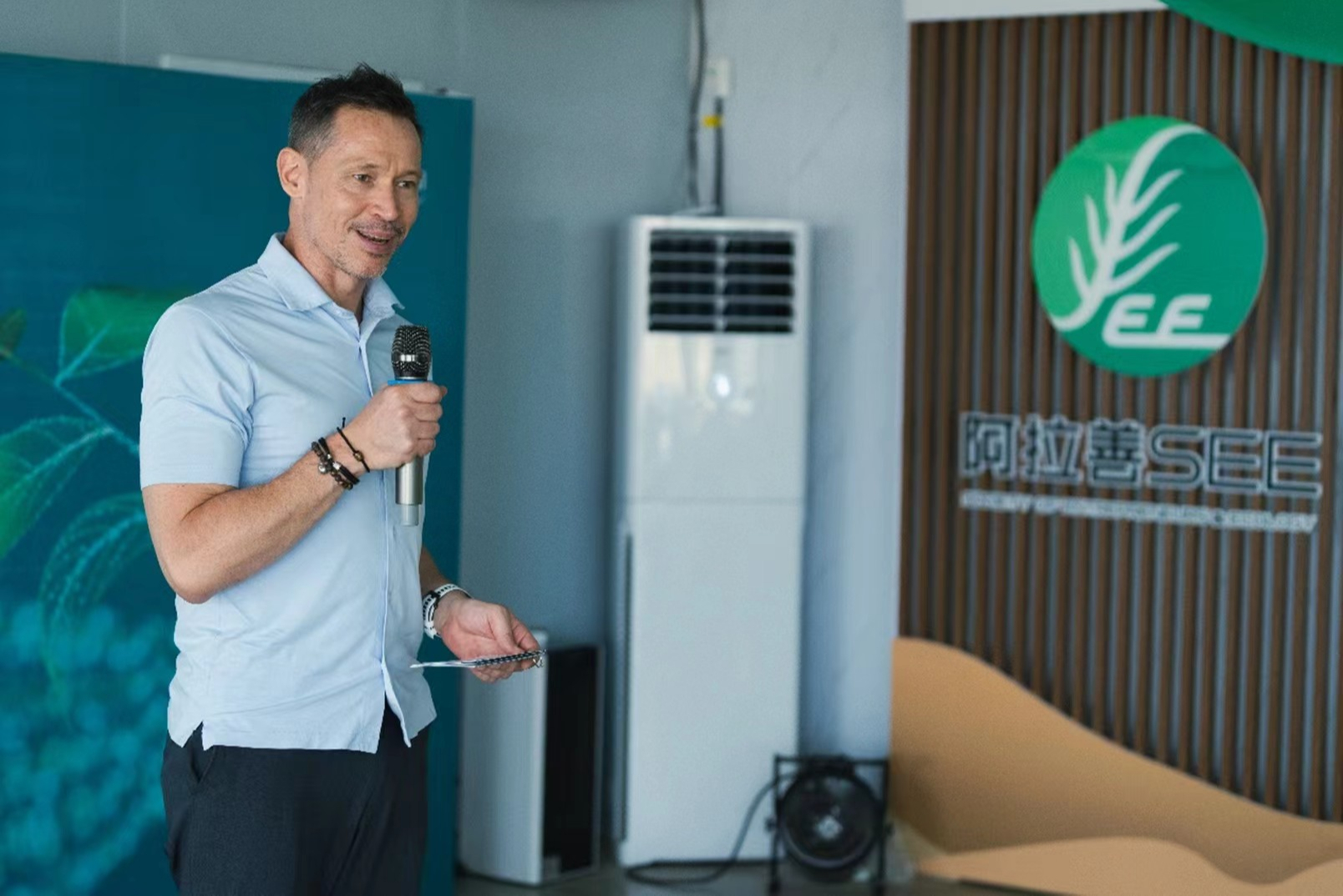Interview with Infineon's Greater China Chief Financial Officer: Moving towards achieving carbon neutrality by 2030
Recently, the second "Infineon Ecological Protected Forest" was planted at the SEE Ulanbuhe Ecological Education Demonstration Base in Alxa, Inner Mongolia Autonomous Region.
This is a further continuation of the cooperation between Infineon Technology (China) Co., Ltd.(hereinafter referred to as Infineon Technology) and the Beijing City Entrepreneurs Environmental Protection Foundation (SEE Foundation)"100 Million Haloxylon ammodendron" public welfare project. New tree species such as flower sticks, Caragana, and Calligonum have been planted in severely desertified areas. Through continuous investment, we can effectively help local desertification prevention and control.
According to Zhu Dejun, the relevant person in charge of the SEE Ulanbuhe Ecological Education Demonstration Base in Alxa, in 2014, the SEE Foundation launched the "100 Million Haloxylon ammodendron" project to plant psammodendron represented by Haloxylon ammodendron in key ecological areas of Alxa., to curb the spread of desertification and help ecological protection in the Alxa area. Starting from 2023, Infineon has cooperated with the SEE Foundation to donate and support the "100 Million Haloxylon ammodendron" project. So far, 58880 sandy tree species have been planted in Alxa, covering an area of approximately 1231 acres, achieving sand fixation of approximately 580,000 square meters.
At the event site, Thomas Zimmerle, chief financial officer of Infineon Technology Greater China, said in an interview with reporters: "While Infineon promotes low-carbon and digitalization through its products and solutions, it also assumes responsibility for society. Infineon has always implemented green concepts in its business operations and reduced carbon emissions throughout the process. In the future, we will continue to contribute and create a green future together."

Qi Mile, Chief Financial Officer of Infineon Technology Greater China
"The semiconductor industry is relatively at the upper reaches of the industrial chain, and the research and development and application of new materials and new technologies are crucial to promoting the sustainable development of downstream users. Among the more representative third-generation semiconductors, silicon carbide and gallium nitride can improve the energy efficiency of applications such as new energy vehicles. In layman terms, it means greatly shortening the charging time of new energy vehicles but achieving longer cruising ranges." Zimile introduced that at present, Infineon's semiconductor products are widely used in the entire energy chain such as wind power, photovoltaics, high-speed rail, energy storage and other fields, helping to achieve a net-zero society.
In addition to promoting digitalization and low-carbon processes through its own technologies and solutions, Infineon also continues to promote green and low-carbon transformation in its production and operations. In 2021, Infineon's European factories will start using green electricity, and North American factories will start using green electricity in 2022. In China, Infineon's Wuxi plant will complete the construction of a rotary adsorption + regenerative thermal oxidation (RTO) organic waste gas treatment system in 2023. The organic waste gas removal rate will be stable at 90%-95%, significantly reducing carbon dioxide emissions. In 2025, the Wuxi plant will achieve 100% green electricity.
"As of the end of fiscal year 2023, Infineon's carbon emissions have been reduced by 57% compared with the 2019 benchmark, and green electricity accounts for 82% of Infineon's total electricity consumption." Zimile said that Infineon is steadily moving towards its goal of achieving carbon neutrality by 2030, which includes direct and indirect energy-related carbon emissions (scopes 1 and 2). The increased use of green electricity in Infineon's global factories is a concrete response to direct and indirect energy-related carbon emissions (scopes 1 and 2). Currently, Infineon has set an even more ambitious goal, aiming to extend the company's climate change response to the supply chain (Scope 3) and promote the entire supply chain to reduce its carbon footprint.
According to reports, on June 10, Infineon announced that it will provide product carbon footprint (PCF) data from now on. The product carbon footprint (PCF) is a measure that quantifies the greenhouse gas emissions of individual products and can be used to compare the impact of different products on the climate. By providing detailed PCF data, it not only improves transparency on environmental impacts, but also helps Infineon's customers advance their sustainability goals and effectively reduce their carbon footprints.







